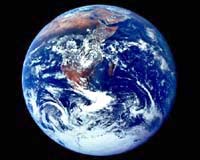CHANNELS SERVICES | 
Thousands of people returned home from shelters in northern Japan Sunday as aftershocks dwindled following Saturday's three strong earthquakes that injured more than 420 people and damaged hundreds of houses. Although no lives were lost in the quakes, residents remain alert for the "big one," a massive quake that scientists believe will hit this region, some 350 kilometers (220 miles) northeast of Tokyo, sometime in coming decades. It has only been two months since another big tremor registering 7.0 on the Richter scale struck Miyagi prefecture, injuring more than 100 people and damaging property, including historic ruins. The latest string of seismic activity started when a tremor struck the Pacific coast region at 12:13 am Saturday (1513 GMT Friday), measuring 5.5. It was followed later in the day by two other quakes registering 6.2 and 5.3. Police said 423 people had been injured in the prefecture. Of them, 28 sustained serious injuries such as broken bones, but none of the injuries were life-threatening. The quakes damaged 1,025 houses, with 14 totally destroyed, while water supplies to 11,959 people were cut in the prefecture. "We were lucky because it rained and few people were outdoors to be hit by collapsed walls and such," said Kenji Sato, the public relations chief for Nango, a rice-growing town close to the epicenter of the quakes. "Pupils also stayed home as the summer holiday has just begun." The weather cleared up on Sunday and town residents were seen clearing away debris from collapsed walls and fallen roof tiles as the intensity and frequency of aftershocks dwindled. He said that the town's 7,000 people were well aware of six massive quakes that have hit Miyagi with a magnitude of 7.5-8.0 at an average interval of 37.1 years since 1793 as a result of strains in geological plates in the nearby Pacific seabed. The last massive quake occured in June 1978, killing 28 people and damaging 6,757 houses. "The government has warned that there is the 99 percent possibility of such a big one within 30 years. It has been weighing heavily on our minds," Sato said. The state Meteorological Agency in Tokyo said the latest tremors did not represent the cyclical killer quake. The prefectural police said 2,451 people had spent the night at 57 public facilities considered able to withstand quakes, such as school gymnasiums. The Japan Broadcasting Corp. put the figure at 3,097. The meteorological agency said it had detected 1,008 aftershocks in the 39 hours since the first quake, of which 280 were strong enough to be felt by humans. Since midnight Saturday, 206 aftershocks were recorded, the strongest measuring 4.3, the agency said. "The frequency is steadily declining as aftershocks are being reduced in scope. The situation is settling down," an agency official said. Takayoshi Suwa, a 75 year-old pensioner, was seen fixing a chest to the wall and insulating windows at his home here. "Damage has been done although I have fully been prepared," he said. We need to map out counter-measures individually, not counting on the local administration." All rights reserved. Copyright 2003 Agence France-Presse. Sections of the information displayed on this page (dispatches, photographs, logos) are protected by intellectual property rights owned by Agence France-Presse. As a consequence, you may not copy, reproduce, modify, transmit, publish, display or in any way commercially exploit any of the content of this section without the prior written consent of Agence France-Presse. Quick Links |
|
| The contents herein, unless otherwise known to be public domain, are Copyright 1995-2003 - TerraDaily. AFP Wire Stories are copyright Agence France-Presse ESA Portal Reports are copyright European Space Agency. Additional copyrights may apply in whole or part to other bona fide parties. Advertising does not imply endorsement, agreement or approval of any opinions, statements or information provided by SpaceDaily on any web page published or hosted by SpaceDaily. Privacy Statement |
